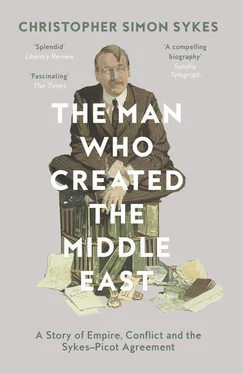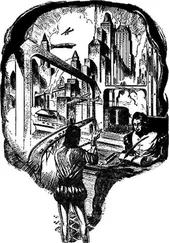1 ...7 8 9 11 12 13 ...20 The repercussions of this affair were far-reaching. The Carter family had to leave Sledmere and were sent to London, where employment was found for them in Grosvenor Street, while Alice was set up in a house round the corner in Mount Street. Tatton was angry enough to threaten to disinherit his son, a step which Jessie somehow managed to dissuade him from. Instead, he was immediately removed from Beaumont School and forbidden from accompanying his father on his annual trip to the East. Instead he spent the winter of 1894 alone at Sledmere with his terriers, from whom he could not bear to be separated, and with a new tutor, a young Catholic called Egerton Beck, who was widely read and already the author of a number of papers on monastic history. A man of impeccable dress and manners, with a fascination for the past, he hit it off at once with his new charge, of whom he was to become a lifelong friend. Mark could not wait to take Beck into the Library, where they spent hours studying the papers of the Sykes ancestors, poring over the wonderful folios of engravings by Piranesi, and devouring the military histories that Mark loved so much.
In the spring of 1895, at the age of sixteen, Mark was sent abroad, to an Italian Jesuit school in Monaco, an unusual choice inspired by his mother’s friendship with the then Princess of Monaco, the former Alice, Duchess of Richelieu, whom Jessie had met in Paris, at one of her celebrated salons in the Faubourg Saint-Honoré. Jessie, Beck and three of his terriers accompanied him there, and they moved into a rented house, the terriers living out on the flat roof. ‘The atmosphere at Monte Carlo,’ Mark later wrote, ‘was a peculiar one for a boy of my years. It is quite natural to think of people going there for pleasure, but for study seems rather curious. I knew everything about the inner workings of the tables and knew most of the croupiers.’ Not as well as Jessie, however, who haunted the tables while her son was at school. One day word got out that she had disgraced herself by flinging her hat down on the table in fury after sustaining a particularly large loss.
As for the school itself, which Mark attended as a day-boy, he found the discipline stifling after the relaxed atmosphere of Beaumont, and much of his time was taken up with his terriers, whose number had grown to eight by the time they returned to England in July. Sadly in the autumn he had to leave them behind when he left for Brussels to undergo the final part of his education before going up to university, a stint at the Institut de Saint-Louis, a slightly less rigid school than the one in Monaco, but where the boys were still ‘very much overworked’. He was to take lodgings in a hotel during the term-time, which unfortunately forbade pets, so he had to bid farewell to his little family, with whom he was eventually reunited at Christmas.
Amongst the guests staying in the house that December was Jessie’s former admirer Thomas Gibson Bowles, with his daughters, Sydney and Dorothy, who was nicknamed ‘Weenie’. Sydney wrote an account of the stay in her diary. They arrived on Christmas Eve. It was snowing heavily and the Sykeses were giving a Christmas party in the house for the tenants. ‘Two whole cows [were] cut up, and the mince pies were without number. There were … fifty or sixty people come for the beef and we were struck by their good-looking, well-fed appearance.’ At dinner, Jessie gave presents to the two girls, a ‘lovely little box’ to Sydney and ‘a handsome writing desk’ to Weenie. ‘Lady Sykes is very nice and extremely kind-hearted ,’ she noted.
On Christmas Day, which was ‘all snow and glitter’, a ‘great number of Carol singers came round all day, beginning as soon as we got down to breakfast’, but there was no church since Tatton had demolished the existing one in order to build a much grander Gothic church. Instead ‘Father Theodore and Mark and I and Grayson and the dogs (an ugly little crew of ten fox terriers) went for a long walk through the wood.’ She later noted, ‘Mark keeps ten together in order to observe their habits when living in lots. One of their habits is that when their leader gets old, they kill and eat him!’ At lunch they had the nicest crackers she had ever seen. ‘There was one I should think quite a yard and a half long, which Mark and I pulled. It went off with such a bang that Tap was quite frightened.’
Sydney found Tatton very kind, but also thought him rather silly. ‘It is impossible to help laughing at him,’ she wrote. ‘For instance, Mark is still very fat, too fat really, though not so bad as he used to be. But Sir Tatton, seeing him a trifle thinner than when he last saw him, said “Ah Yes! Yes! Wasting away, wasting away.” I roared. I simply couldn’t help it.’ There were more crackers at dinner, after which they played charades ‘which were very funny,’ noted Sydney. ‘One word was “Preposterous”, another “Drunk-ard”, another “Dyna-mite”, etc, etc. Mark seems to have a great talent for acting among his other accomplishments.’ 3
This was to be the last happy Christmas that Mark was to spend at Sledmere for many years to come, for life was about to take a terrible downward spiral. To begin with, the relationship between his parents had reached a new low. His mother’s drinking had reached the point where her faithful maid, Gotherd, had on several occasions to hide her scent to prevent her drinking that too, as well as resorting, when her mistress was in a particularly bad state, to such tactics as hiding her stays so that she could not go out and disgrace herself on the street. She was also severely in debt. As early as 1890, for example, she had owed as much as £10,000, a staggering sum equivalent to over £1,000,000 at today’s values, and, when pressed for the money by the Union Bank, had given them a letter purporting to be a guarantee for that amount signed by Tatton. When the bank had asked him to confirm this, he had denied that the signature was his. Jessie told him he was mad to suggest that she would commit such a fraud, and to avoid a scandal Tatton had paid up, but the incident had shaken him.
At 46 Grosvenor Street, the bills were piling up. To pay them, Jessie was borrowing money from unscrupulous moneylenders – a Mr Sam Lewis was one, a Signor Sanguinetti another – at the most exorbitant interest rates, and she was speculating on the stock market. She often found herself borrowing from one person merely to pay back another. She even sank to asking Mark to lend her money from his allowance. This time Tatton, supported by the bank, put his foot down and refused to help her, a decision in which he was also backed up by his new land-agent, his nephew, Henry Cholmondeley. In the winter of 1896, Tatton’s advisers, in particular a ruthless lawyer called Thomas Gardiner, Deputy Sheriff to the City of London, persuaded him to go one step further. A recent amendment to the Married Women’s Property Act of 1882 stipulated that a husband would be declared free from all debts subsequently incurred by his wife if he advertised his refusal to pay up in a daily newspaper. In spite of his abject horror of the impending publicity, and the fact that this was hardly a gentlemanly thing to do, Tatton went ahead and became the first man ever to publish such a notice. It appeared in various newspapers on the morning of 7 December.
I, SIR TATTON SYKES, Baronet, of Sledmere, in the County of York, and No. 46 Grosvenor Street in the County of London, hereby give notice that I will NOT be RESPONSIBLE for any DEBTS or ENGAGEMENTS which my wife, LADY JESSICA CHRISTINA SYKES, may contract, whether purporting to be on my behalf or by my authority or otherwise.
In desperation Jessie now took to gambling and was soon losing sums as high as £530 a week at the tables and in the bookmakers’ shops. Her behaviour began to lose her friends, including Blanche Howard de Walden, the mother of Mark’s friend Tom Ellis. A nervous and delicate woman, she became afraid of Jessie, and put an end to the friendship between their sons. ‘I must admit,’ Tom later wrote, ‘that Jessica, partially caged and embittered, was terrifying. At last Mark and I saw that our friendship could not continue. Mark had been more than a friend. He had been a sort of miraculous Philistine striding through the difficult age of adolescence and bowling over the conventions that I could only blindly resent. We had never talked of religion and we had never discussed our mothers. These two things we kept sacred. We knew what was putting us apart, and I think it was bad for both of us. The parting had to come, and Mark shook hands with me a little ruefully and said suddenly “If we meet again we shall smile at this. If not, then was this parting well made.”’ 4
Читать дальше











